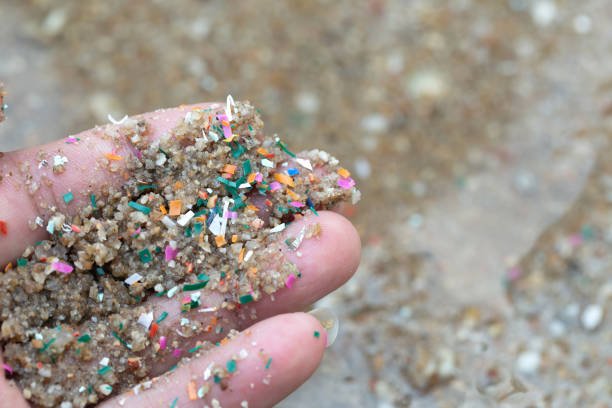Plastic has a reputation of topping the charts of being a number one pollutant in our environment. Widely used due to its lightweight and affordability, but at the cost of it being a threat to our surroundings if not recycled properly. They almost take ages to decompose while being reduced to smaller pieces, smaller than 5mm called microplastics. These invisible particles of plastics are widely spread owing to the wear and tear of synthetic textiles, paints and car tyres. What comes across as shocking is that they are also manufactured to use in health and beauty products. It seems we are unintentionally inviting problems posing long-term effects in the world.
Sources of Microplastics
There are numerous sources of microplastics. They are largely found in many exfoliating products as microbeads, in fabrics, improper waste management, industrial discharge, and plastic mulch films in agriculture. Washing synthetic fabrics releases microplastics in the water contributing to the main source of microplastics in the oceans and the population explosion in India has resulted in increased plastic waste. While plastic mulch films are used in the fields for increasing nutrient contents, controlling pests and reducing rotting of fruits, their breakdown makes it possible for microplastic to seep into the soil and remain there. These particles are stubborn, often escape from the filter systems and tend to accumulate in the surroundings. It results in microplastics and the chemicals used to manufacture them roaming around freely ready to strike the organisms that come their way.
Environmental Impact and Human Health Concerns
Such striking characteristics of microplastics clearly makes them a threat to all living things and habitats. The plastic waste in water when degraded pollutes the water bodies. The quality of water degrades and at present microplastics are found in tap water and bottled drinking water. The aquatic life directly encounters these particles and ingest them. It causes accumulation of microplastics in the organisms involved in food chains and food webs called bioaccumulation. The size of the particles determines the effect it has on marine animals. Fishes and crabs risk obstruction in their gastrointestinal system and transfer of microplastics in crucial organs such as pancreas and liver. The contaminated soil, on the other hand, has a huge impact on the food we consume. Microplastics in the soil results in poor soil quality, loss of fertility and can redirect themselves into the crops grown in the polluted soil. The microbiome found the soil is harmed. The population of natural pest control insects, and the insects that maintain the rich quality of the soil, such as earthworms and mites, has decreased significantly as per a field-study in 2020.
Humans are experiencing the downside of microplastic pollution in both ways, directly and indirectly. The direct source being the plastic water bottles, skin products, beauty products. While the indirect way is through consuming plants and animals. Products from plants and animals like beer, sugar and honey also contain microplastics. These invisible contaminants can lead to weight gain, insulin resistance, cancer, hormonal imbalance, cancer and so much more. The speculation of long term effects involves organ failure, cardiac arrest from microplastics blocking the blood vessels, and respiratory disorders. Needless to say that they can transfer from parents to offspring. It is an emerging major concern as humans take in millions of microplastics everyday through various sources and coexist with these particles in the environment.
Current Situation and Future
The question that should be globally asked is that are we willing to risk it all and compromise the quality of our food, resources and health for the sake of a harmful substance? Although we have acknowledged that the change will take time, we can certainly do our part in reducing the usage of plastic. India has banned single-use plastics and regulated the size of plastics in use. It is a good start and can be further backed by controlling the levels of microplastics in daily use products like skincare, make-up, toothpaste, etc.. High quality filters should be designed and implemented for waste water management and its release into water bodies. Keeping track of the pollution through microplastics with special detectors is another way to mitigate the present circumstances. Public awareness campaigns are extremely needed for a country like India where people are not educated and well-informed. Government initiatives and NGO efforts can spread knowledge to the consumers. Research and innovation can drastically change the future with alternatives to plastics and improved ways to reduce or remove the buildup of microplastics in living organisms.
Thus, microplastics pose a significant and an extending threat to our environment and public health. The numerous sources of release of microplastics in the surrounding makes it difficult to contain. The situation calls for urgent action in terms of research, innovation, policies, regulation and implementation taking into consideration the severe impacts on water bodies, marine life, soil, crops and humans. By engaging communities and institutions, we can take meaningful steps towards protecting our current environment and ensure a sustainable future for generations to come.

Deeksha, is a Biochemist and an aspiring neuroscientist. Her research interest lies at the intersection of molecular neuroscience and drug discovery.


